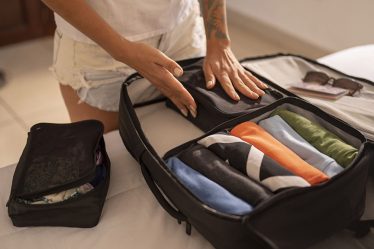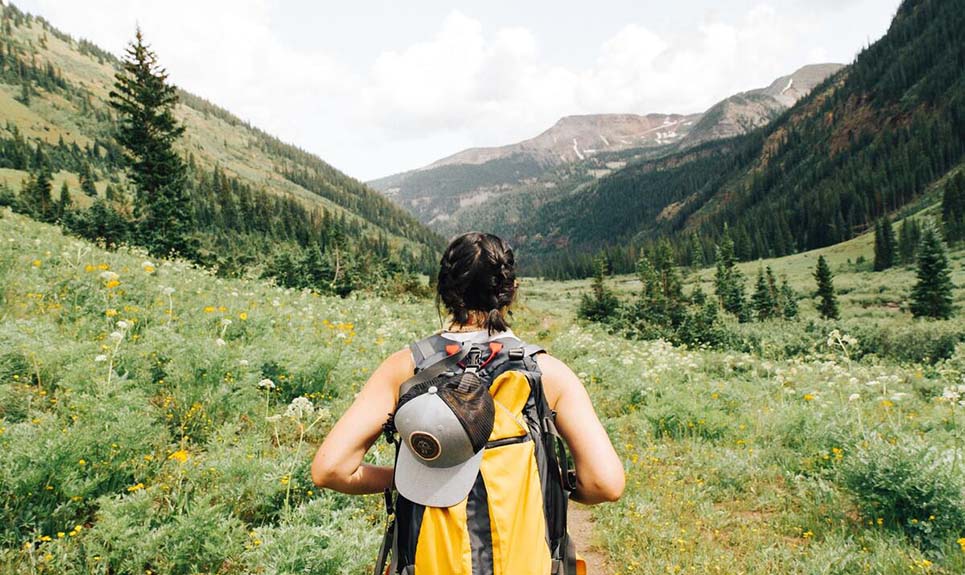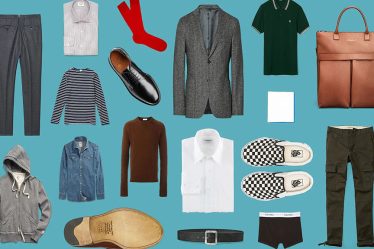
New York City has always held a special place in my heart. With its iconic skyline, vibrant neighborhoods, and endless things to do, it’s a destination that’s both exciting and overwhelming, especially for first-time visitors. Traveling in New York doesn’t have to break the bank, and with the right tips, you can save both time and money while experiencing everything this incredible city has to offer. In this guide, I’ll share practical advice on what to pack, how to get around, where to eat, how to manage your budget, and much more, all from my own experience traveling through the Big Apple.
1. Packing Essentials for New York
New York’s weather can be unpredictable, especially if you’re visiting during the spring or fall. From my experience, you should always pack layers, regardless of the season. The city can have chilly mornings and evenings, even in the summer, while winters are notorious for freezing winds that whip through the streets.
- Weather-Appropriate Clothing: In the winter, be sure to pack a warm coat, gloves, and a hat. A scarf will be your best friend when it’s windy. If you’re visiting in the summer, light clothing is key, but don’t forget to bring a sweater for cooler evenings or overly air-conditioned places like museums or subways.
- Comfortable Shoes: New York is a city made for walking, and you’ll want comfortable shoes to explore. Trust me, even with the extensive subway system, you’ll find yourself walking more than you anticipate.
- Portable Charger: Your phone will be your lifeline for directions, subway schedules, and finding places to eat. A portable charger will save you from the dreaded “low battery” notification when you’re navigating the city streets.
- Reusable Water Bottle: Walking through New York can be exhausting, and staying hydrated is essential. Carrying a reusable water bottle helps you avoid constantly buying plastic bottles and saves you money.
2. Dressing for the City
While New York has a reputation for high fashion, especially in places like Fifth Avenue or Soho, the truth is, you’ll see people dressed in all sorts of styles. Whether you’re a tourist or a native New Yorker, comfort is king, especially if you plan on exploring the city by foot.
- Casual During the Day: Jeans, sneakers, and a light jacket or hoodie are perfect for daytime exploration. Layers are your best friend since the temperature can change throughout the day, and some subway stations are stifling hot while others are cold.
- Dressing Up for a Night Out: If you plan on going to Broadway shows or dining at a nice restaurant, you might want to pack one or two dressier outfits. A smart casual look, like a dress with flats or slacks with a nice top, will work for most occasions.
3. Understanding New York’s Weather
The weather in New York can be a bit of a roller coaster, depending on the season. I’ve visited the city in both sweltering summer heat and bone-chilling winter cold, and each season has its own challenges.
- Summer: Summer in New York can be hot and humid, with temperatures often exceeding 90°F (32°C). Lightweight, breathable fabrics are a must, and I recommend packing a hat and sunscreen to protect yourself from the sun.
- Winter: Winters in New York can be brutal, with temperatures regularly dropping below freezing. Snow is common, and icy sidewalks can make walking difficult. A good pair of waterproof boots and a warm coat are essential if you’re visiting during the colder months.
- Spring and Fall: Spring and fall are, in my opinion, the best times to visit New York. The weather is mild, and the city feels more alive with blooming flowers in the spring or colorful leaves in the fall. Pack layers, as the temperature can vary from morning to evening.
4. Navigating the Subway and Public Transportation
One of the best things about New York is its public transportation system. The Metropolitan Transportation Authority (MTA) operates buses and subways across the five boroughs, making it easy and affordable to get around. However, the subway system can be confusing for first-timers, so I’ll share some tips to help you navigate like a pro.
- How to Get a MetroCard: Before you can ride the subway, you’ll need a MetroCard. You can purchase one at any subway station from the vending machines or booth attendants. A single ride costs $2.90, but if you plan on using the subway frequently during your stay, I recommend getting an Unlimited Ride MetroCard. For $33, you can get a 7-day pass, which allows you unlimited rides on the subway and buses.
- Understanding the Subway Lines: The subway system consists of multiple lines, each designated by a letter or number. It’s essential to know whether you’re taking a local or express train—local trains stop at every station, while express trains only stop at major stations. If you’re unsure, don’t hesitate to ask a local or check a subway map.
- Bus System: While the subway is often faster, buses can be a more scenic way to get around, especially if you’re not in a hurry. The buses accept MetroCards as well, and many routes take you through some of the city’s most iconic neighborhoods.

5. Budgeting for Your New York Trip
New York is notoriously expensive, but with some careful planning, you can stretch your budget further without missing out on any of the fun.
- Accommodations: Finding affordable accommodations in New York can be tricky, but I’ve found that short-term rental apartments or budget hotels outside of Manhattan can save you money. Neighborhoods in Brooklyn or Queens are often cheaper and still offer easy access to Manhattan via the subway.
- Food: One of the best ways to save money on food is by enjoying the city’s incredible street food scene. From hot dogs to halal carts, New York’s streets are filled with affordable and delicious eats (more on that later). For sit-down meals, consider dining during lunch specials or visiting casual, counter-service spots, which are often cheaper than traditional restaurants.
- Entertainment: New York offers plenty of free or low-cost activities. Museums like the Museum of Modern Art (MoMA) and the Metropolitan Museum of Art offer pay-what-you-wish admission at certain times, and the city’s parks, including Central Park and Prospect Park, are perfect for free outdoor adventures.
6. Exploring New York’s Street Food Scene
One of my favorite things about New York is the abundance of street food. You can grab a quick, affordable meal on almost any corner, and the options are as diverse as the city itself.
- Must-Try Street Foods:
- Hot Dogs: A classic New York street food, you’ll find hot dog carts all over the city. For a few dollars, you can enjoy a quick snack while sightseeing.
- Halal Carts: These carts serve dishes like chicken or lamb over rice, often with a side of salad and pita. One of the most famous is the Halal Guys on 53rd Street and 6th Avenue.
- Pretzels: Another New York staple, soft pretzels are sold at many street carts and make for a great snack while you’re on the go.
- Street Food Safety: While street food is generally safe in New York, there are a few things to keep in mind. Look for busy vendors with lots of customers—it’s usually a good sign that the food is fresh. Also, avoid vendors that appear to have been sitting out for long periods, especially in hot weather.
7. Getting a Local SIM Card
Staying connected while in New York is essential, whether for navigation, staying in touch with loved ones, or finding restaurant recommendations on the go. While many places offer free Wi-Fi, I recommend getting a local SIM card for more reliable access.
- Where to Buy a SIM Card: You can buy a local SIM card from stores like T-Mobile, AT&T, or Verizon. Most convenience stores also carry SIM cards from prepaid providers like Boost Mobile or Simple Mobile. I’ve found that getting a prepaid SIM is usually the most cost-effective option for short stays.
- Cost and Data Plans: Depending on your needs, you can choose from a variety of data plans. For around $30, you can get a SIM card with unlimited data for a month, which is more than enough for a typical vacation.
8. A 5-Day Itinerary for New York
If you’re planning a shorter trip to New York, here’s a mini itinerary based on my own experiences. This will give you a good mix of iconic sights, local experiences, and some relaxation time.
- Day 1: Start with Central Park in the morning, then explore the nearby Metropolitan Museum of Art. In the afternoon, head to Fifth Avenue for some shopping and finish the day with a visit to Times Square.
- Day 2: Visit the Statue of Liberty and Ellis Island in the morning. After lunch, spend the afternoon exploring Wall Street and the 9/11 Memorial & Museum. In the evening, walk across the Brooklyn Bridge for stunning views of the skyline.
- Day 3: Spend the morning in SoHo and Greenwich Village, browsing the boutiques and enjoying coffee at a local café. In the afternoon, visit the High Line and explore the art galleries in Chelsea.
- Day 4: Take a day trip to the Bronx Zoo or the New York Botanical Garden. In the evening, enjoy dinner in Little Italy or Chinatown.
- Day 5: Spend your last day exploring Brooklyn. Visit Prospect Park, the Brooklyn Museum, and enjoy lunch at one of the many trendy spots in Williamsburg.
9. Day Trip Recommendations
If you have extra time or want to escape the city for a day, there are plenty of great day trip options just outside New York.
- The Hamptons: Known for its beautiful beaches and upscale atmosphere, the Hamptons is a popular summer getaway for New Yorkers. It’s about a two-hour drive or train ride from Manhattan.
- Bear Mountain: If you’re a nature lover, Bear Mountain offers hiking trails and stunning views of the Hudson River. It’s a great escape from the hustle and bustle of the city and is just an hour away by car.

10. Travel Insurance: My Recommendation
Whenever I travel, I always make sure to get travel insurance, and New York is no exception. After some trial and error, I’ve found that World Nomads is one of the best options for coverage in the U.S.
- Why I Recommend World Nomads: They offer comprehensive coverage for both medical emergencies and trip cancellations, which gives me peace of mind. Plus, their policies are flexible and can be extended if your plans change. For about $70 to $100, you can get coverage for a week-long trip, which is a small price to pay for the protection it offers.
Final Thoughts
Traveling to New York can be an unforgettable experience, but it’s essential to plan ahead to save time and money. Whether it’s packing the right gear, navigating the subway, or finding the best local eats, these tips will help you make the most of your trip. By following this guide, you’ll be able to experience the best of New York without blowing your budget. Happy travels!



